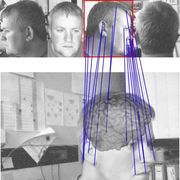Modelling
Graphics
Bangor University

Data visualisation is one of the most important areas of information management and no more so than for those “Grand Challenge” problems that require High Performance Visualisation (HPV). HPV is characterised by high-quality graphics, large datasets, computationally-intensive tasks, large scale data distribution and often extensive data communication. A typical HPV task is a complex feedback process, involving data collection, visualisation design, task parallelisation, immersive visual display and interfacing with the corresponding data generator such as a simulation engine. With the aid of both concept development and software prototyping, this project is addressing the conceptual models that encapsulate a variety of HPV information and tasks, and will formulate a generic model for a networked supercomputing environment compatible with the Grid.
Other key issues that the project will deal with include: How does data flow into, within and out of an HPV environment? What are the commonly used protocols governing the interactions among users, visualisation and simulation systems, computational and visualisation results, and local and remote resources for HPV? What is the most appropriate decision metric for prioritising HPV data and tasks, and how can HPV tasks be scheduled in a way that is transparent to the end-users? Can a general purpose software tool be built to manage HPV tasks automatically, and if so, can such a tool be customised to suit HPV environments of various configurations?
For more info on the project contact Prof Nigel John, here.
Collaborators: University of Leeds, University of Wales, Swansea, University of Manchester